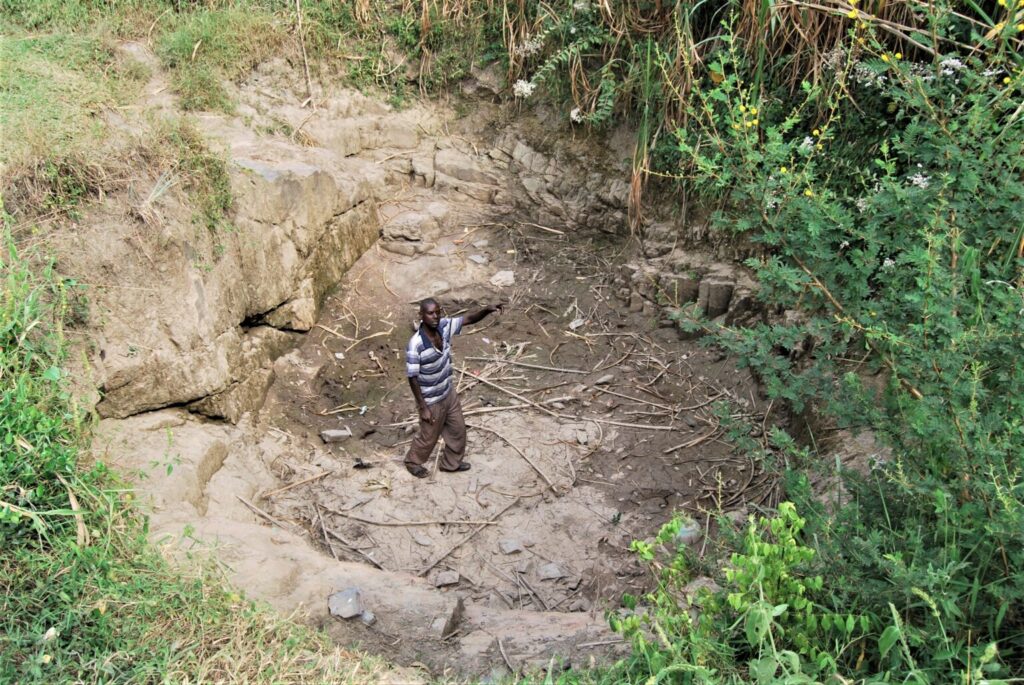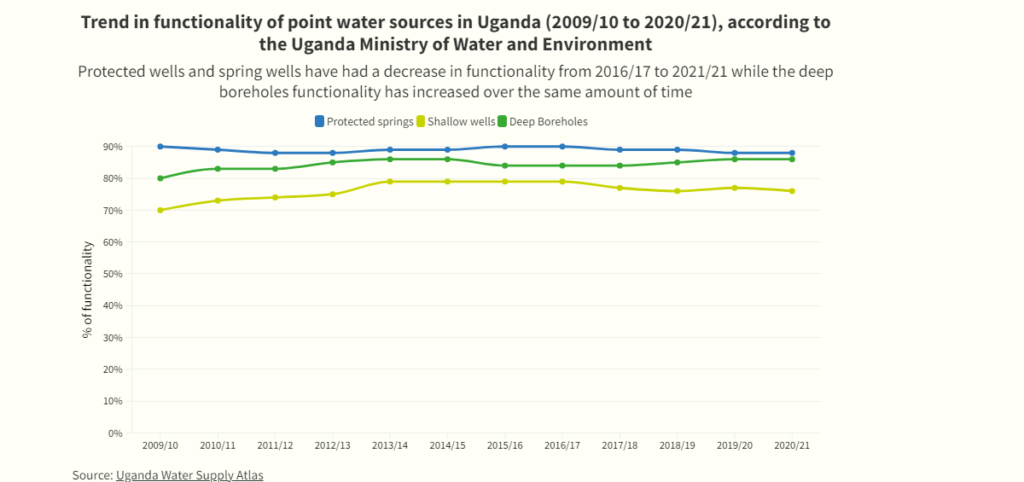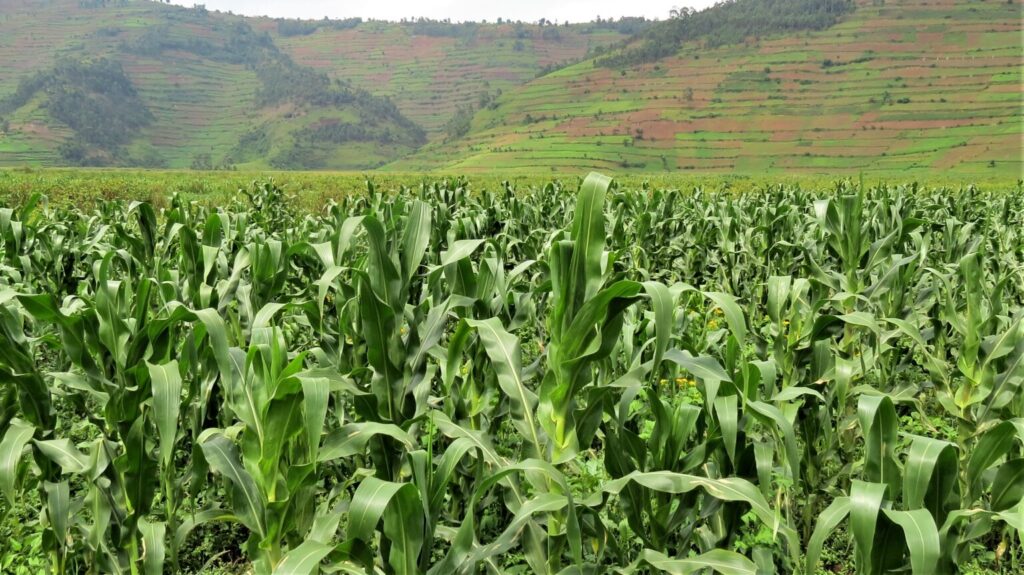By Frederick MUGIRA
Kakukuru-Rwenanura Town Council is found in Ntungamo District and lies within the Kagera basin in Uganda. Over the last six years, 12 shallow wells and 16 bore holes have dried up, according to Kahinda Misach, the former chairperson of the Rwikiniro sub-county who is now the Kakukuru-Rwenanura town council mayor.
Almost all shallow wells in this area are hand dug in and are usually hit hard by the mid-year dry season. Unlike in the past decades, well diggers now have to spend more days and energy digging deeper into the ground to find water. Sometimes they do not find it. And occasionally, even fresh wells dry up within months of excavation.

“We tried digging boreholes and shallow wells when I was the chairperson Rwikiniro sub-county, but the water table is very far,” says Kahinda Misach.

Amidst this water security challenge, Kahinda believes the solution lies deep within the ground; the deep groundwater.
Tumushangye Tom, the Ntungamo district water officer, agrees with Kahinda. He says the water table is far deep in this part of the district but can be reached if one carries out a feasibility study and dug further. “This is why we opt for boreholes in such sub-counties instead of gravity flow water schemes,” narrates Tumushangye.
According to the Nile Basin Initiative (NBI), groundwater is one of the most important sources of drinking water for people, livestock, and wildlife watering in the Nile Basin, with over 70 percent of the region’s rural population depending on it.

The Entebbe – based organisation also highlights increasing groundwater usage for other economic activities, including irrigation agriculture, mining, and industries.
“Groundwater holds the promise of closing the growing gap between water demand and water supply as well as buffering the effects of climate change and variability in the Nile Basin,” notes NBI in a report.
Accessed through boreholes, springs, reticulated systems, and dug wells, among other ways, residents of the Kagera basin have used water from underground for various purposes ranging from domestic uses to watering livestock and crops.

Uganda’s southwestern district of Ntungamo, together with Kabale, Isingiro, and Rakai districts, falls under the Kagera aquifer. Other countries that share this 5,778 km2 aquifer are Tanzania and Rwanda. Unfortunately, all districts in Uganda under this aquifer continue to face water insecurity, especially during the mid-year dry season.
Tumushangye says some communities where the water table is close to the surface have planted eucalyptus species that dry the water sources and catchment areas. Most eucalyptus species have long taproots that sink deep into the soil layers sucking groundwater from the aquifers.
Likewise, Muchunguzi Sam, the Ntungamo district chairperson, says people have converted wetlands into farmlands and settlements, impacting the water table. Wetlands trap runoff water, enabling it to sink into soil layers to form groundwater.

Like other parts of the country, the increasing population, coupled with climate change, is straining the available water sources in Ntungamo district. The remaining option is groundwater. The situation is almost the same in the neighboring districts of Kabale and Isingiro.
In Kabale, Jennifer Twasiima, a farmer from the Buhara sub-county, says vegetation cover was cleared in most parts of her community. This left nothing to trap surface water runoff, which is now lost to the valley bottoms, lakes, and streams. This gives no opportunity for the underground aquifer to recharge.
She calls for sensitization of the local communities on the importance of conserving the environment, saying not many rural communities know about groundwater, describing it as “a hidden resource.”
Read Also; Tanzania calls for harmonized laws to protect the environment and safeguard groundwater
Milton Kwesiga, a Kabale-based environmentalist and the executive director of Africa Disaster Reduction Research Emergency Missions (ADREEM), also based in Kabale, says most watersheds in the district have been encroached on by farmers and constructions. This, he says, is a result of the increasing population in the district.
In Kamubizi parish, Isingiro district, the primary source of safe and clean water for the community is River Kagera, which is nine miles away from the community’s settlement. According to the locals, the other option available is a well containing unsafe and sour waters that cannot be consumed.

Tweyogyere James, a resident of this area and a father of five, testifies to having left school because of the water problem at the parent’s home. “I had to choose between going to school and fetching water for my family; I chose fetching water,” narrates Tweyongyere.
Jeconious Musingwire, an environmental scientist and manager for the national environment watchdog- NEMA in the southwestern region, blames these water challenges on “people who destroy the environment.” He says, “groundwater directly correlates with surface water and the environment.”
According to NBI, “the surface water systems, especially the forests and wetlands, play an essential role in sustaining water quality and quantity, providing a storage medium for water, and supporting complex ecosystem niches of economic and environmental importance.”

NBI is currently implementing a project to strengthen the knowledge base, capacity, and cross-border institutional mechanisms for sustainable use and management of selected transboundary aquifers in the Nile Equatorial Lakes (NEL) and Eastern Nile sub-basins. Kagera aquifer falls in the NEL region. The project is funded by the Global Environment Facility (GEF) through UNDP.
The project will, in particular, build and expand on the understanding of groundwater resources through detailed mapping and assessment of selected aquifer systems and the development of guidelines (technical and policy) on sustainable exploration and use of groundwater together with its conjunctive use with surface water.
It is also exploring conjunctive use of surface and ground waters, strengthening the capacity for groundwater management at both the national and regional levels and raising awareness.
James Byaruhanga, a resident of Omundizi, in Isingiro district, also a part of the Kagera basin, welcomes the NBI’s idea of raising awareness about groundwater. “You need to sensitize the local communities on how to protect and regenerate groundwater; otherwise, they do not know,” says Byaruhanga.
This article was supported by InfoNile with funding from Nile Basin Initiative.

